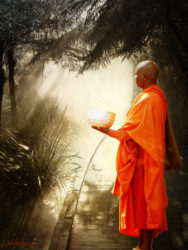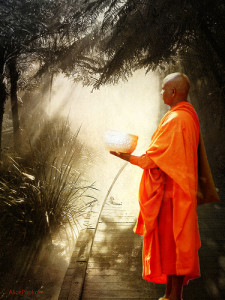As a child, everything was possible. Upon being born, the world was a place of infinite possibility, endless opportunity, and a playground for your curiosity and learning. For those first few minutes, there was no conditioning, there were no problems, and therefore no need for solutions. Your awareness of the world was pure. Untainted.
Then something happened. You became influenced by the people around you. By their approach to life. By their ideas on who you should be. And your awareness began to contract. You began to see the world as a series of problems that would need to be overcome. Or people and things being obstacles that got in your way. You had a sense of constantly moving from one challenge to the next.
And then some of us, by nature or opportunity, began to be able to expand our awareness a bit more. We saw the glass as half full. Saw the opportunity in the challenge. Followed the light through the darkness. Understood the need for a journey to the destination. Saw the purpose or the reason for the challenges and obstacles as an opportunity to learn and be more aware.
I used to see the world through the eyes that others had given me. I saw myself the way they saw me. I lived my life through comparison to others, and as a series of situations sent to test my resolve. And then something changed. I found coaching. I found something that helped and allowed me to look at myself in a different way. That expanded my awareness of myself and my world.
Expanding Your Awareness
Most of us live our lives from our contracted, limited selves. We think what other people want us to think. We do the things they want us to do. We follow the careers they recommended we should. We react the way we’ve been taught to do. And that’s OK. Until it stops working for you and making you happy.
What we know is that our reality is an expression of our awareness which is made up of five different elements:
Your Beliefs
A belief is an acceptance that something exists or is true, especially one without proof. They form in childhood and are influenced by our parents, communities, and religion. They can be modified with enough evidence that contradicts the original belief. They can be influenced by advertising. They can be radically altered following major trauma.
Your Expectations
An expectation is a strong belief that something will happen or will be the case in the future. These expectations may or may not be realistic and can run the danger of becoming self-fulfilling prophecies. If a person believes what they are told, or convinces themselves of the fact, chances are this person will see the expectation to its inevitable conclusion – good or bad. This is why it is particularly important to be careful with expectations around children who inherently believe what figures of authority tell them (parents and teachers).
Your Assumptions
An assumption is something we take for granted. It’s usually something we previously learned and do not question. It forms part of our system of beliefs. We assume our beliefs to be true and use them to interpret the world around us. As humans, we naturally and regularly use our beliefs as assumptions and come to conclusions based on those assumptions. We must do so to make sense of where we are, what we are about, and what is happening.
Your Feelings & Moods
Your feelings are the emotional side of your character. They are a state of consciousness, and can be triggered from emotions, sentiments or desires. Your feelings can and will affect your mood, as your mood is a temporary state of mind or feeling. Moods differ from emotions and feelings as they are less specific, less intense, and less likely to be triggered by one particular thing.
Your Perceptions
Your perceptions are the way you see, understand, or interpret something. They are a result of you organising, identifying, and interpreting information using your senses to understand the environment around you.
Recognise, Validate & Choose
You probably noticed that there are very fine lines between each of these five elements which can make it tricky to work with them. If we believe that our reality is an expression of our awareness, then we have the opportunity to check in with any one of these five elements to help us understand how we can get closer to living our full potential. First you need to recognise what’s driving your thoughts and behaviour:
- Is there a limiting belief that was planted in you as a child?
- How has your environment shaped your assumptions and perceptions of your capability?
- What expectations were put upon you by authoritative figures that misled you to believing something about yourself that may not be true?
When asking yourself these questions, you get the chance to re-validate them with your adult mind and awareness. Then you have the choice to question your beliefs, expectations, assumptions, feelings, moods, and perceptions at any moment.
What’s working for you and what isn’t? Where are your mind and soul in conflict with each other? If your mind is the collection of your thoughts, feelings, emotions, and ideas, then your soul is the space between your thoughts, your awareness. Once you become conscious of your awareness, you can make different choices that influence your reality, birth your creativity, embrace the uncertainty, and make strides toward your potential.
What Next?
If you are not sure how to go about examining or influencing some of the elements of your awareness, that’s something I can help you with as a coach. Much of the work of coaching is to help people recognise their limiting beliefs that affect all other aspects of their life and then make a conscious choice to change and evolve or replace those beliefs with something that serves them better. If you want help with yours, contact me and we can set up your free 1-hour coaching session so you can experience what coaching is for yourself.
In the meantime, feel free to comment below on what you are aware of that is or isn’t working for you presently.
Photo credit: AlicePopkorn / Foter / CC BY-NC-ND

